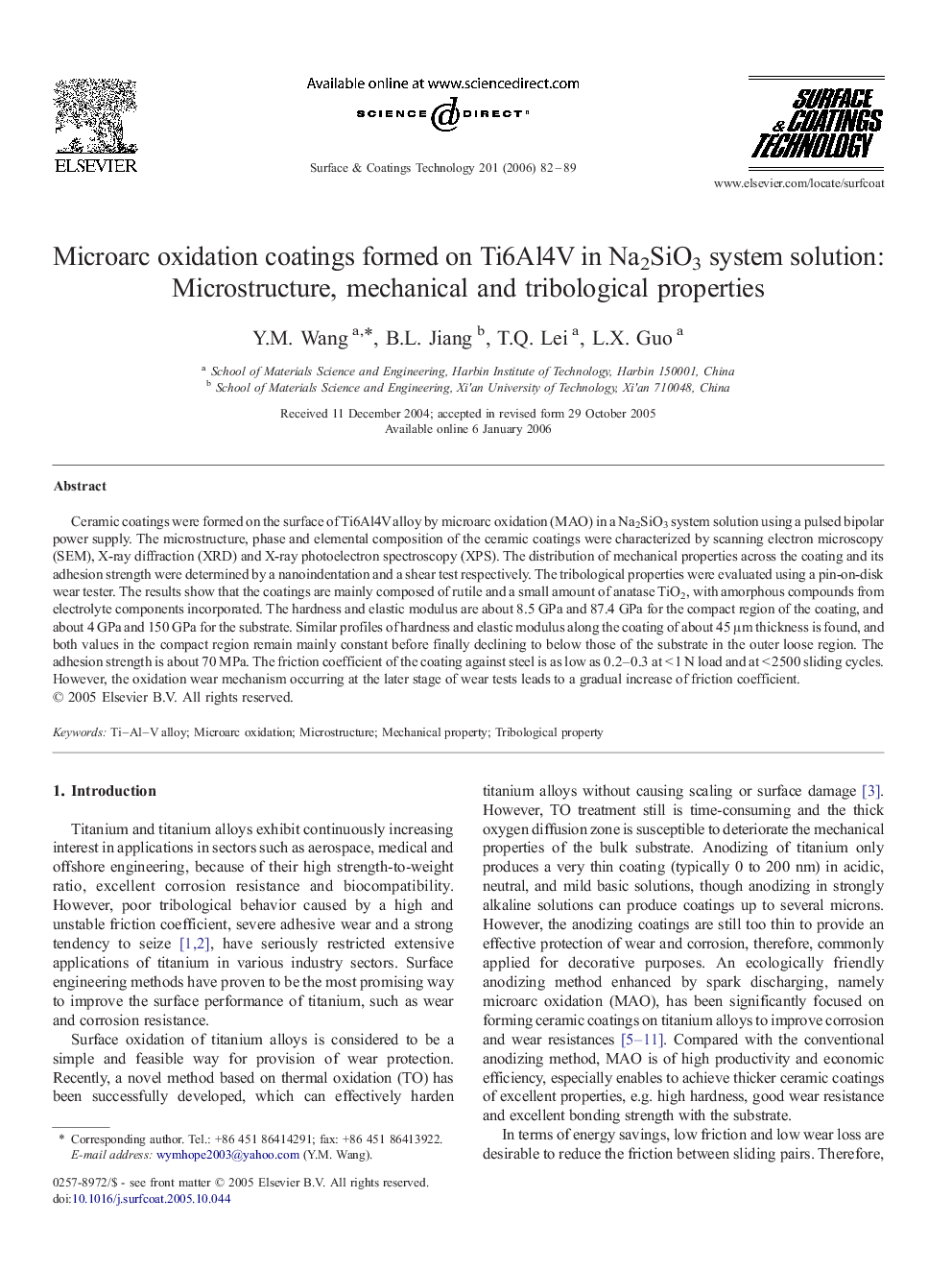| Article ID | Journal | Published Year | Pages | File Type |
|---|---|---|---|---|
| 1663061 | Surface and Coatings Technology | 2006 | 8 Pages |
Ceramic coatings were formed on the surface of Ti6Al4V alloy by microarc oxidation (MAO) in a Na2SiO3 system solution using a pulsed bipolar power supply. The microstructure, phase and elemental composition of the ceramic coatings were characterized by scanning electron microscopy (SEM), X-ray diffraction (XRD) and X-ray photoelectron spectroscopy (XPS). The distribution of mechanical properties across the coating and its adhesion strength were determined by a nanoindentation and a shear test respectively. The tribological properties were evaluated using a pin-on-disk wear tester. The results show that the coatings are mainly composed of rutile and a small amount of anatase TiO2, with amorphous compounds from electrolyte components incorporated. The hardness and elastic modulus are about 8.5 GPa and 87.4 GPa for the compact region of the coating, and about 4 GPa and 150 GPa for the substrate. Similar profiles of hardness and elastic modulus along the coating of about 45 μm thickness is found, and both values in the compact region remain mainly constant before finally declining to below those of the substrate in the outer loose region. The adhesion strength is about 70 MPa. The friction coefficient of the coating against steel is as low as 0.2–0.3 at < 1 N load and at < 2500 sliding cycles. However, the oxidation wear mechanism occurring at the later stage of wear tests leads to a gradual increase of friction coefficient.
